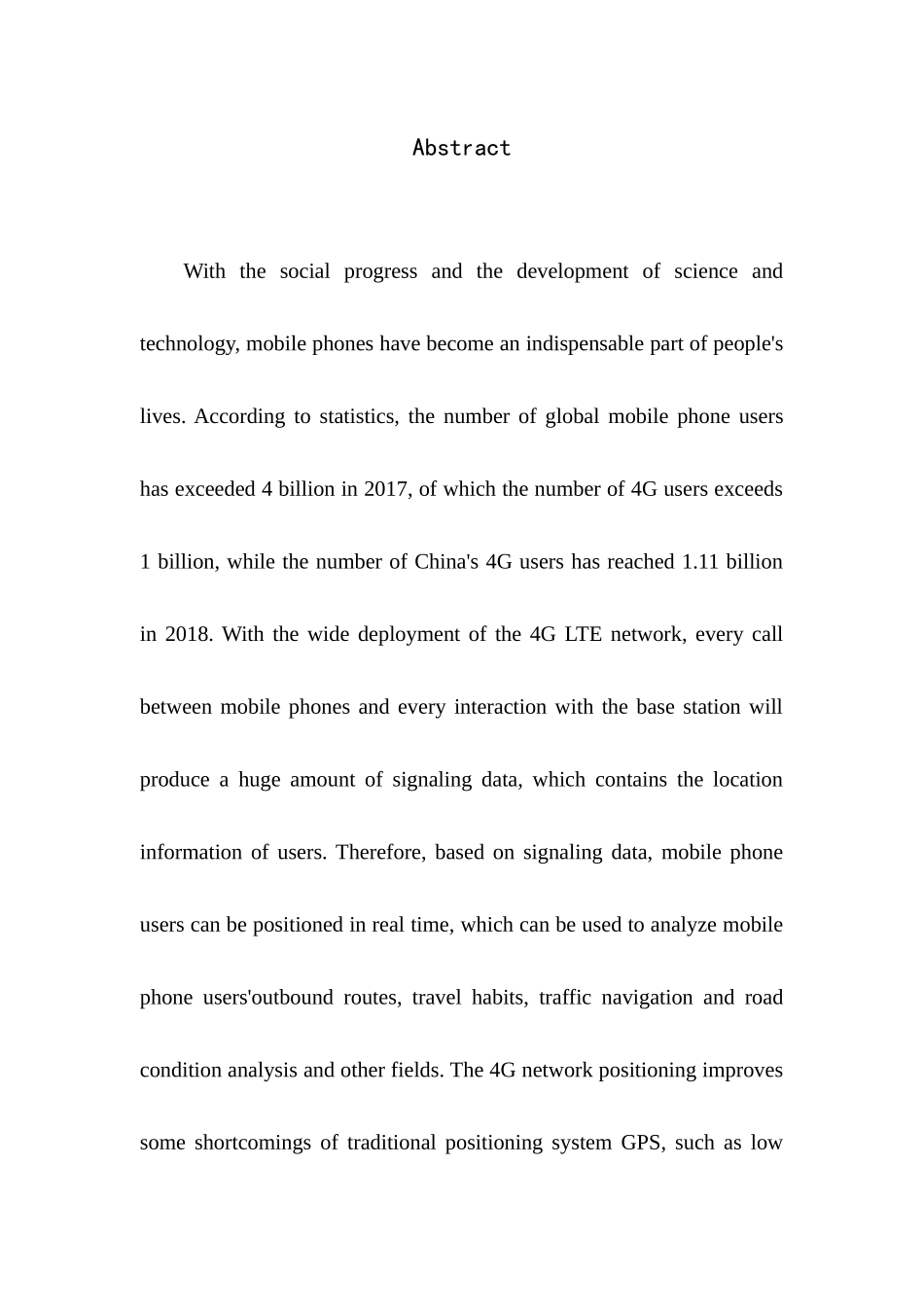摘要社会进步必然伴随着科技的发展,而现代,手机已经与我们的生活息息相关,以前出行需要随身携带很多物品,但是现在仅仅一部手机就可以代替所有,这无疑使我们的生活更加便利与高效率。根据统计,全球的手机用户数量在 2017 年已经超过 40 亿之多,其中超过 10 亿的 4G 用户数量;而在 2018 年,仅仅是中国的 4G 用户数量已超过 11 亿户。随着 4G LTE 网络大范围部署,手机相互之间的每一次通话就会产生海量的信令数据,同样,基站的每一次交互也会产生大量的信令数据。而用户的位置信息都包含在这些信令数据中,因此,通过对信令数据的分析可以实现对手机用户的实时定位,也可以用来分析手机用户的外出路线、出行习惯、导航系统以及路况分析等领域。而 4G 网络定位改进了传统定位系统 GPS 的某些缺点,比如:在某些特定的场景下 GPS 定位精确度低、耗能高,而且不适用于大规模应用。本文就 4G 网络定位技术及算法与卫星定位技术进行研究,并将二者进行性能对比,针对不同定位特点,做一些简要探讨。关键词:4G 网络定位、卫星定位、算法、性能AbstractWith the social progress and the development of science and technology, mobile phones have become an indispensable part of people's lives. According to statistics, the number of global mobile phone users has exceeded 4 billion in 2017, of which the number of 4G users exceeds 1 billion, while the number of China's 4G users has reached 1.11 billion in 2018. With the wide deployment of the 4G LTE network, every call between mobile phones and every interaction with the base station will produce a huge amount of signaling data, which contains the location information of users. Therefore, based on signaling data, mobile phone users can be positioned in real time, which can be used to analyze mobile phone users'outbound routes, travel habits, traffic navigation and road condition analysis and other fields. The 4G network positioning improves some shortcomings of traditional positioning system GPS, such as low accuracy, high energ...


